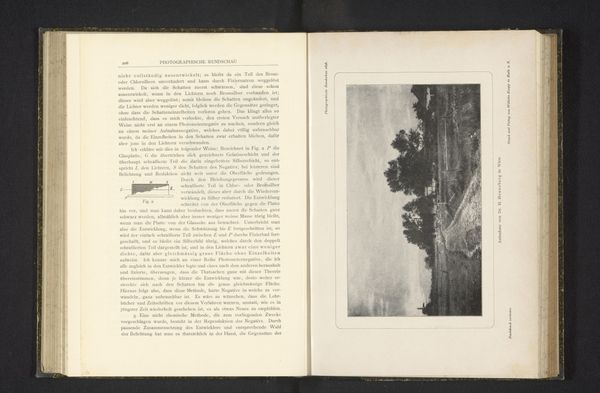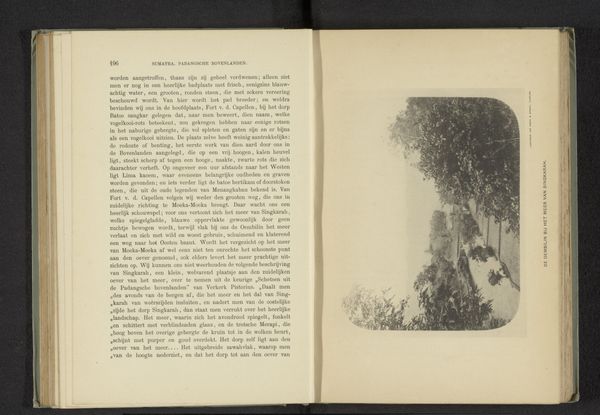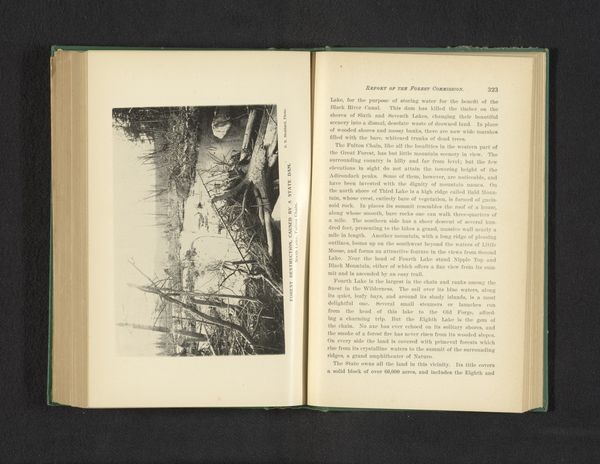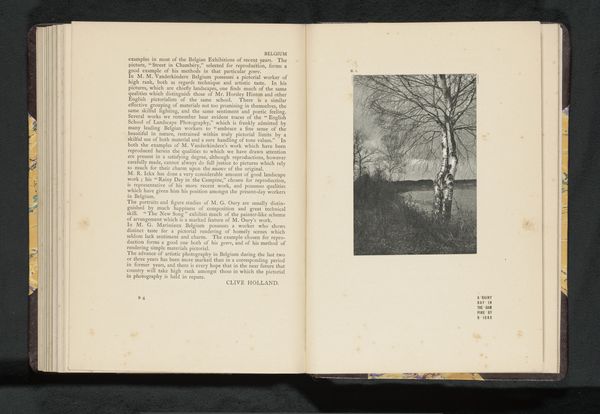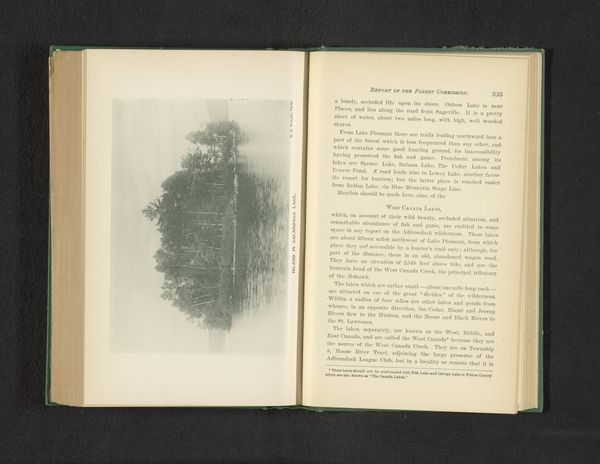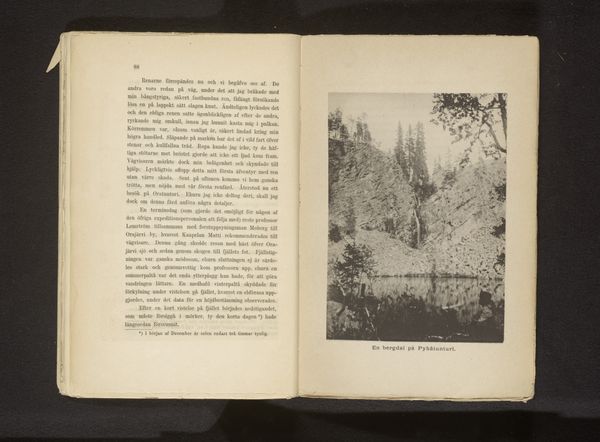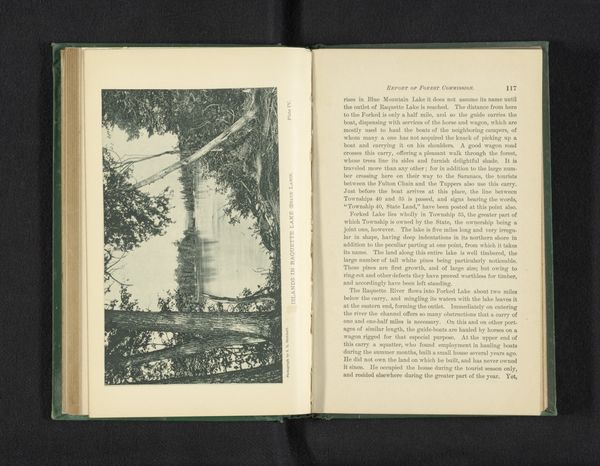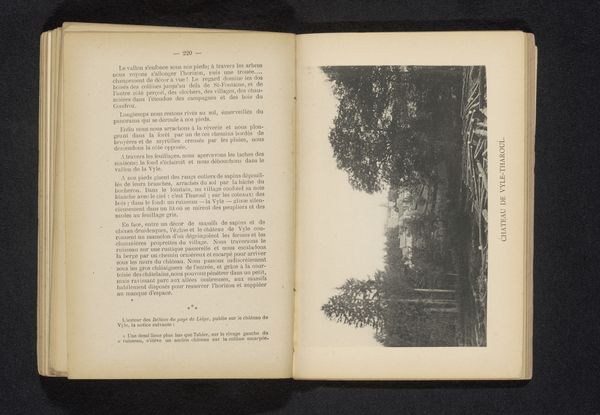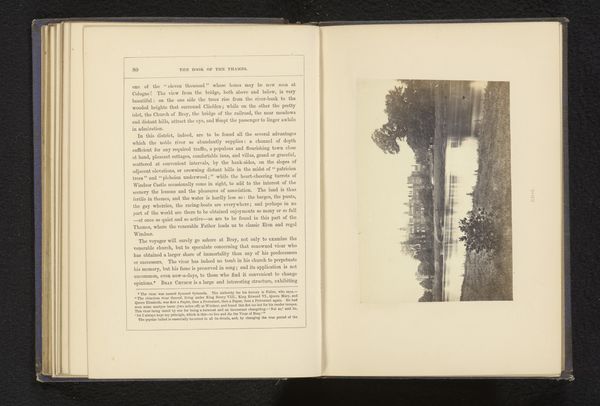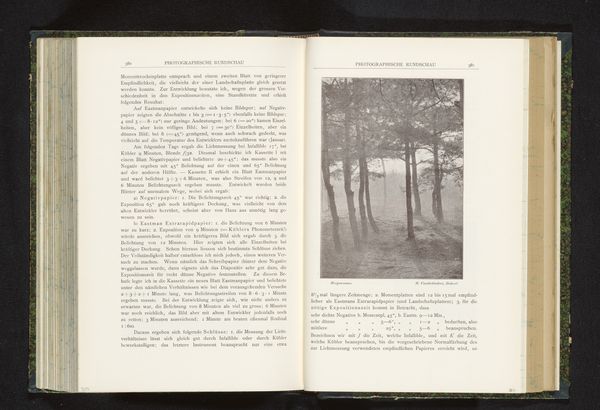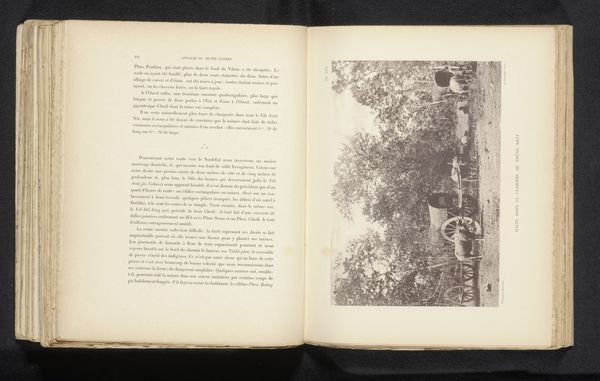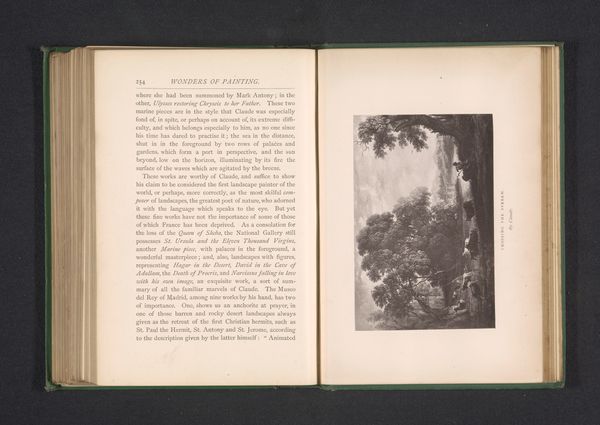
Dimensions: height 88 mm, width 160 mm
Copyright: Rijks Museum: Open Domain
Curator: Editor: This is "Exterieur van een boerderij" by Hugo Henneberg, likely made before 1898, using an albumen print. I’m immediately struck by how this simple image of a farm evokes such a feeling of quiet solitude. How do you interpret this work? Curator: It's more than just quiet solitude, isn't it? Consider the historical context. Late 19th century – industrialization is changing the social landscape. Artists like Henneberg are looking back to rural scenes, possibly as a critique or a commentary on an idealized past clashing with modernity. The farm, rendered in the soft tones of the albumen print, is perhaps a symbol. What do you think it might represent? Editor: Perhaps a simpler way of life that was already fading? Or maybe even a longing for some imagined golden age, before urbanisation? But the composition also seems carefully constructed. Curator: Exactly! Henneberg isn’t simply capturing a scene, but actively framing a particular perspective. We should also note the artistic movement occurring at the time – Impressionism. How is Impressionism at play in the art? Editor: Right, you can see it in the softer focus and emphasis on light and shadow to create mood, less on detailed rendering. It seems to reject strict realism and convey feelings. I hadn’t thought about this as a kind of social commentary before, more just a peaceful picture. Curator: These artists’ aesthetic choices are rarely innocent or removed from social or political context! Considering photography was also burgeoning as a medium. These prints may carry certain historical and intersectional connotations. Thinking of this photo with Impressionistic techniques really enhances my experience. Editor: It’s really shifted my understanding, considering the various social, historic and theoretical concepts operating. Thanks!
Comments
No comments
Be the first to comment and join the conversation on the ultimate creative platform.
